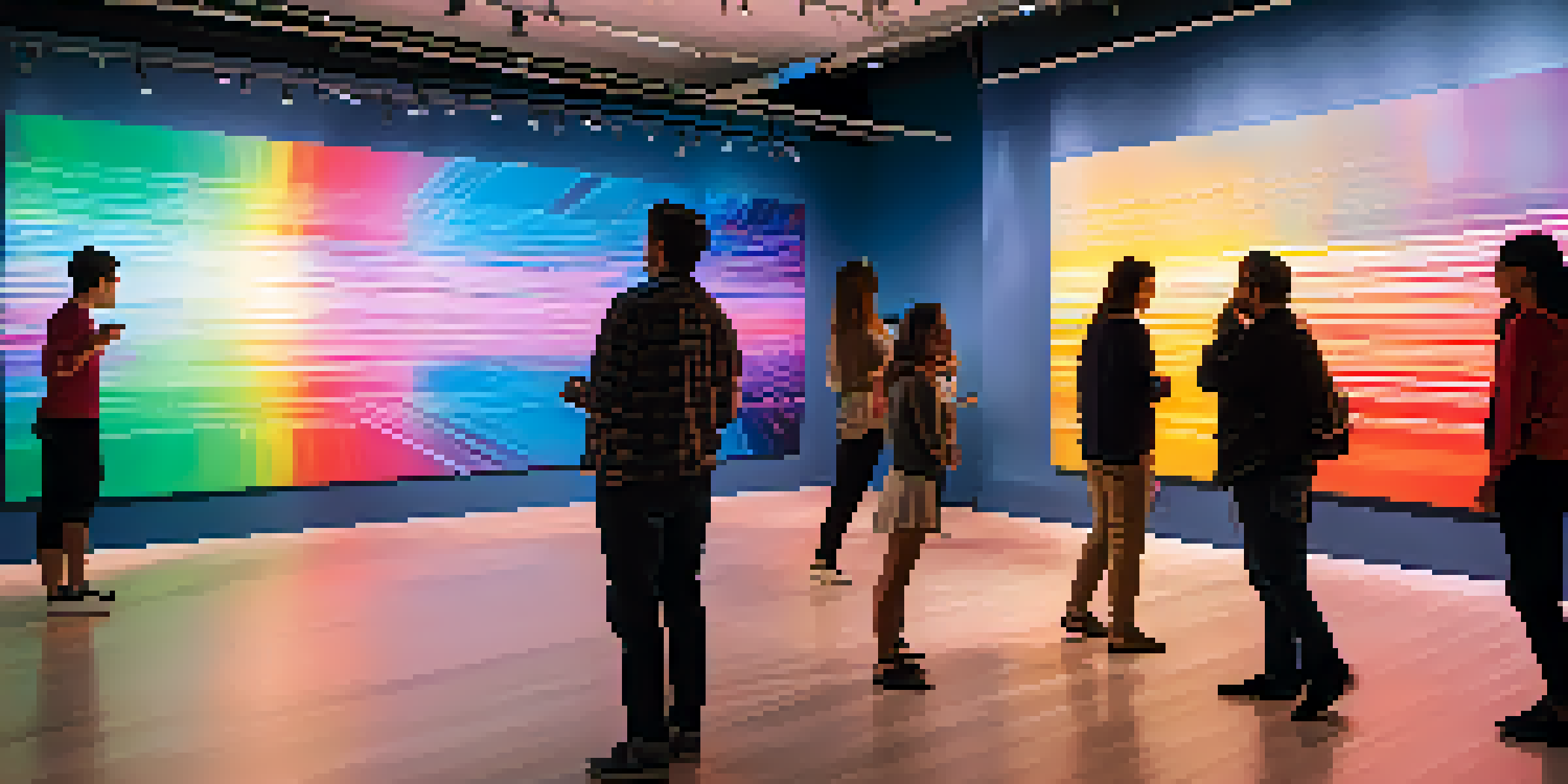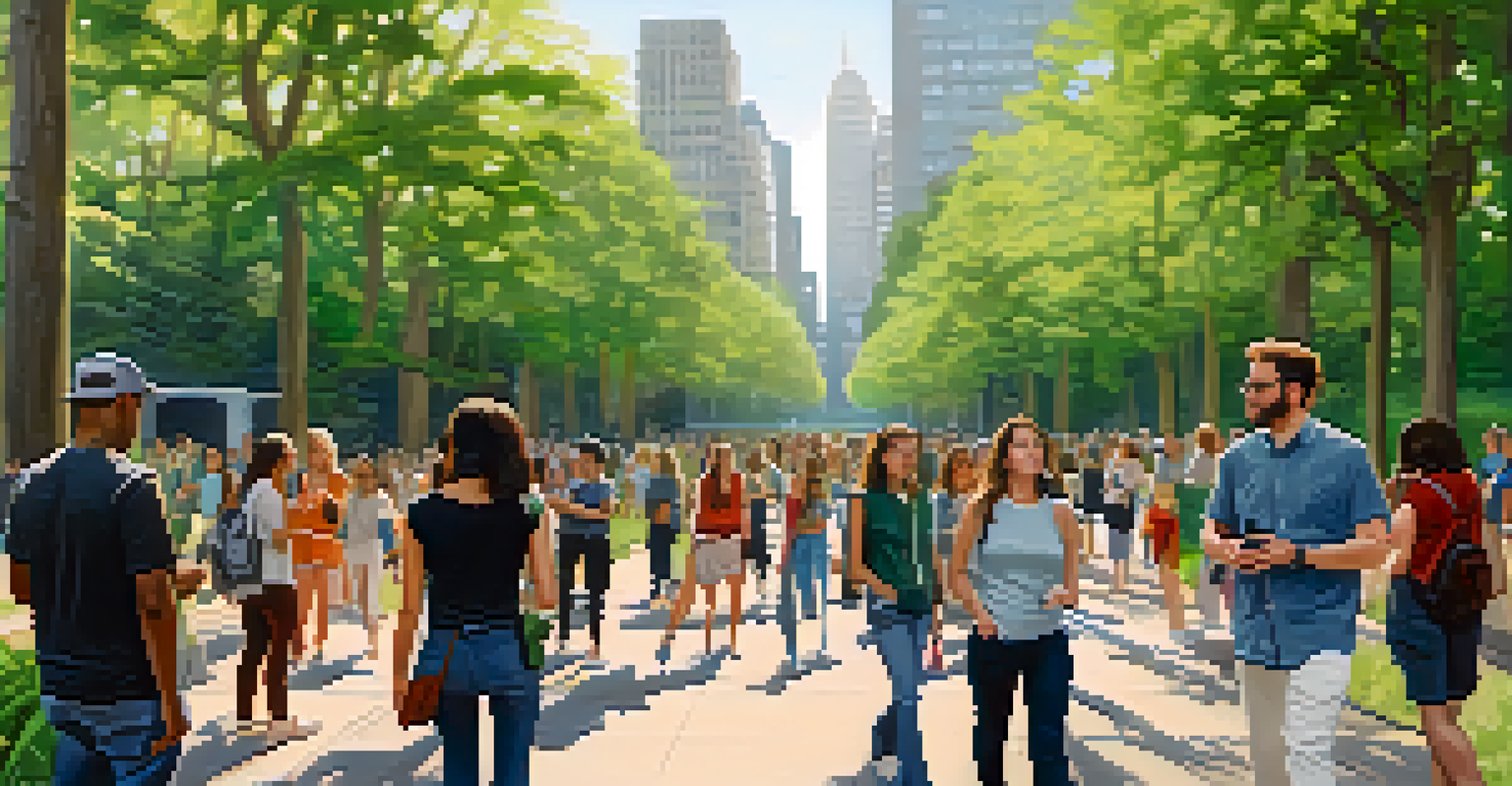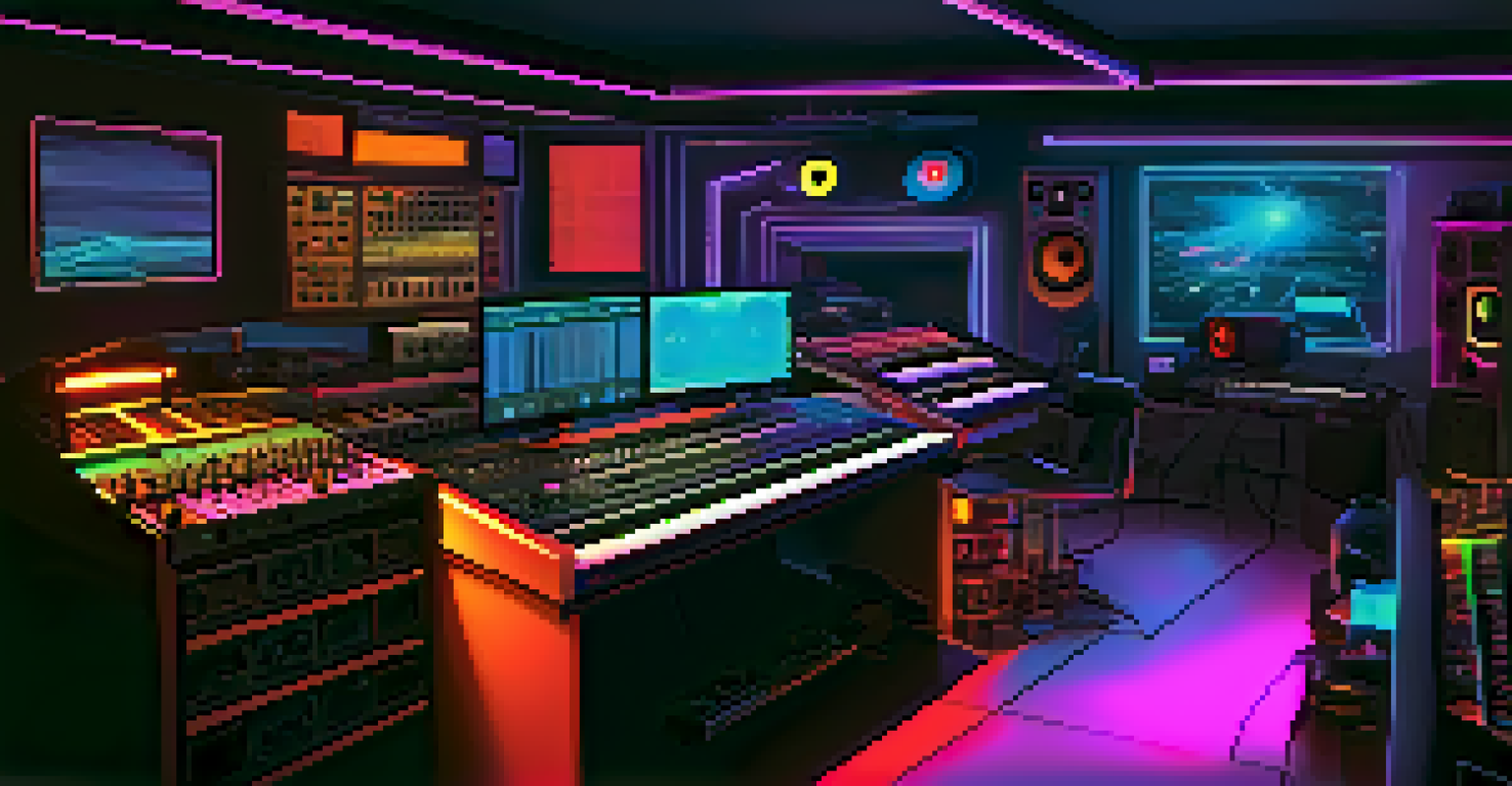Exploring Sound Art in the Context of Technological Advances

Understanding Sound Art: An Overview of Its Evolution
Sound art is an innovative genre that combines auditory experiences with visual elements to create immersive environments. Unlike traditional music, sound art emphasizes the physicality of sound itself, inviting listeners to engage with it in a multisensory way. This evolution has roots in early 20th-century avant-garde movements, where artists began experimenting with unconventional sounds and materials.
Sound is the vocabulary of nature, and it is the language of the universe.
As technology progressed, artists gained access to new tools that expanded the possibilities of sound creation. The invention of tape recorders, synthesizers, and, more recently, digital audio workstations allowed creators to manipulate sound in ways previously unimaginable. These advancements have significantly influenced the production and perception of sound art, making it a vital part of contemporary artistic practice.
Moreover, sound art challenges the listener’s expectations, often blurring the lines between art and everyday life. It invites audiences to reconsider their relationship with sound, encouraging them to explore the nuances of auditory experiences. This transformative journey opens doors to deeper emotional connections and new interpretations of the world around us.
The Role of Technology in Shaping Sound Art Practices
Technology lies at the heart of modern sound art, providing artists with tools to create, manipulate, and disseminate their work. From field recordings to algorithmic compositions, artists harness technology to explore new sonic territories. This integration of tech not only amplifies creativity but also democratizes the art form, allowing more individuals to participate in sound creation.

For instance, software like Max/MSP and Ableton Live enables artists to design intricate soundscapes that react to environmental factors or audience interactions. This interactivity is a hallmark of contemporary sound art, often transforming passive listeners into active participants. The ability to incorporate real-time data into compositions fosters a dynamic relationship between the artist, the audience, and the artwork itself.
Sound Art Blends Multiple Senses
Sound art combines auditory experiences with visual elements, inviting deeper engagement and emotional connections.
Moreover, advancements in virtual and augmented reality have opened up new avenues for sound art experiences. Artists are now able to create immersive environments where sound is spatially manipulated, allowing audiences to experience sound in three dimensions. This innovation not only captivates the senses but also challenges traditional notions of audience engagement.
Exploring Different Forms of Sound Art in Modern Contexts
Sound art manifests in various forms, from installations and performances to radio art and soundwalks. Each of these forms offers unique insights into the way we perceive sound and its relation to space. For example, sound installations often invite viewers to physically navigate through the space, allowing them to experience sound in a more personal and intimate manner.
Art is not a mirror held up to reality, but a hammer with which to shape it.
Additionally, soundwalks, where participants listen to curated sounds in a specific location, provide an opportunity to connect with the environment in new ways. These walks encourage mindfulness and a deeper awareness of the acoustic landscape, illustrating how sound art can transform everyday experiences into artistic explorations. Such practices highlight the importance of context in shaping our auditory experiences.
Furthermore, collaborative projects between sound artists and other disciplines, such as visual art and dance, enrich the landscape of sound art. These interdisciplinary approaches create multifaceted experiences that challenge the boundaries of traditional art forms, pushing the envelope of creativity. By blending various mediums, artists can evoke complex emotional responses and highlight the interconnectedness of different sensory experiences.
The Impact of Digital Platforms on Sound Art Accessibility
The rise of digital platforms has revolutionized the way sound art is shared and experienced. Artists can now distribute their work globally, reaching wider audiences than ever before. Streaming services, social media, and dedicated sound art websites have become essential tools for sound artists, allowing them to showcase their creations and engage with fans directly.
For example, platforms like SoundCloud and Bandcamp enable artists to share their sound art easily, providing a space for feedback and collaboration. This accessibility fosters a vibrant community of creators and listeners who exchange ideas and inspire one another. As a result, sound art is no longer confined to galleries or specific events; it thrives in the digital realm.
Technology Enhances Sound Creativity
Advancements in technology empower artists to create interactive and immersive sound experiences that redefine audience participation.
However, this democratization of access also presents challenges, as the sheer volume of content can make it difficult for emerging artists to stand out. The key lies in cultivating a unique voice and utilizing digital tools effectively to connect with audiences. By harnessing the power of social media and engaging storytelling, sound artists can carve out their niche in the ever-evolving landscape of sound art.
Interactivity and Audience Engagement in Sound Art
Interactivity is a defining feature of contemporary sound art, allowing audiences to become active participants in the artistic experience. This shift from passive consumption to active engagement invites listeners to explore sound in a more personal context. Many sound artists design their work to respond to audience input, creating a dynamic interplay between creator and spectator.
For instance, installations that incorporate sensors can react to movement or sound, altering the auditory experience in real-time. This level of interactivity not only captivates audiences but also fosters a sense of ownership over the experience. When audiences feel that their actions influence the artwork, it deepens their connection to the sound and enhances their overall appreciation.
Moreover, participatory sound art projects encourage communities to come together, sharing their stories and experiences through sound. These collective endeavors not only amplify diverse voices but also highlight the importance of collaboration in the creative process. By engaging communities, sound artists can create meaningful connections that resonate on both personal and collective levels.
Cultural Influences on Sound Art Creation and Reception
Cultural contexts play a significant role in shaping sound art, influencing both its creation and reception. Artists often draw inspiration from their surroundings, incorporating local sounds, languages, and themes into their work. This cultural infusion enriches the sonic landscape, making it a reflection of diverse experiences and narratives.
For example, sound artists from different regions may use traditional instruments or field recordings that highlight their cultural heritage. By weaving these elements into their compositions, they create a unique sound palette that resonates with their identity and history. This approach not only honors cultural traditions but also invites audiences to engage with new perspectives.
Cultural Context Shapes Sound Perception
The creation and reception of sound art are profoundly influenced by cultural backgrounds, enriching the sonic landscape with diverse narratives.
Additionally, the reception of sound art is often colored by cultural norms and expectations. What may be considered avant-garde in one culture might be dismissed in another. This highlights the importance of understanding cultural contexts when engaging with sound art, as it opens up opportunities for dialogue and appreciation across different backgrounds.
The Future of Sound Art: Trends and Innovations
As technology continues to evolve, so too does the field of sound art. Emerging trends suggest a growing interest in artificial intelligence and machine learning, which offer new possibilities for sound composition and interaction. Artists are beginning to experiment with AI-generated sounds, challenging traditional notions of authorship and creativity.
Moreover, the integration of environmental awareness into sound art practices is becoming increasingly prominent. Artists are using sound to raise awareness about climate change and environmental issues, creating works that reflect the urgency of these challenges. This focus on sustainability not only resonates with audiences but also encourages a collective responsibility toward the planet.

In conclusion, the future of sound art is ripe with potential as artists embrace new technologies and social issues. By continuing to push boundaries and challenge conventions, sound art will undoubtedly evolve, offering fresh perspectives and experiences. As we explore these innovations, we can anticipate an exciting journey ahead in the world of sound art.